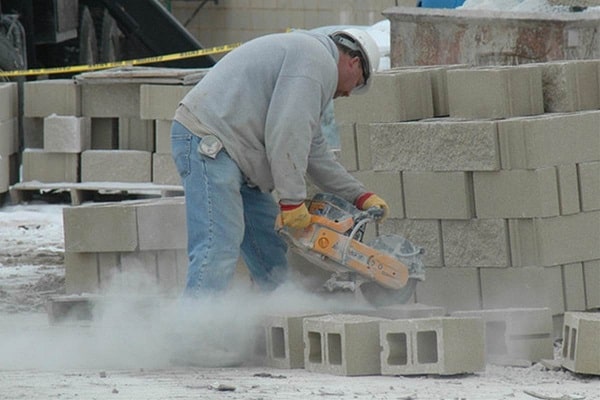The cancer risk tradies can’t see
The Cancer Council Australia is calling for tradies to be more aware of cancer risks on the job after it was estimated that 230 lung cancer cases in Australia each year are caused by exposure to silica dust.
ADVERTISEMENT
Around 600,000 Australian workers are exposed to silica dust at work each year. This includes miners, construction workers, farmers, engineers, bricklayers and road construction workers, as well as those working in demolition.
Cancer Council Australia occupational and environmental cancer risk committee chair Terry Slevin says that many DIY home renovators may also not be aware of the cancer risks when their bathroom tiles or new granite kitchen benchtop are being cut to size by themselves or contractors.
“Silica is surprisingly common – it’s found in stone, rock, sand, gravel and clay, as well as bricks, tiles, concrete and some plastic materials. When these materials are worked on or cut, silica is released as a fine dust that’s 100 times smaller than a grain of sand. It’s so small you can’t see it – but if you breathe it in, in some cases it can lead to lung cancer,” says Terry.
“We continually see workers cutting granite kitchen benchtops, tiles or bricks, or demolishing materials without proper protection in place, which is a very real concern.
“We estimate that silica dust is causing over 230 lung cancer cases each year across the country. These are cancer cases that could have easily been prevented through dust prevention or control, adequate ventilation or personal respiratory protection.
“Of around 11,000 new cases of lung cancer diagnosed each year in Australia over 8,000 are due to smoking, 230 due to silica dust and 130 due to diesel exhaust. These are preventable and given the poor survival rate for lung cancer it is so vital we do all we can to prevent them.”
Terry also says that it is the responsibility of both employers and employees to act sooner rather than later to negate the risks of silica related lung cancer cases.
“Employers have a legal responsibility to provide a safe place to work. Likewise, those working with silica need to take responsibility for their future health, get informed and protect themselves,” Terry says.
“If you are regularly demolishing materials, sandcasting, sandblasting, bricklaying or cutting stone, tiles or bricks as a part of your job, you are at risk, so you need to get informed today.
“Proper protection is a lot more than just wearing a dust mask. It includes on-site ventilation, using specialised tools with appropriate blades and dust suppression features and a range of other important safeguards explained in the new fact sheet.
“While the risk is far greater for people who might be exposed to silica dust in their paid employment, we also recommend home renovators and DIY warriors follow the guidelines to reduce the prospect of inhaling silica dust.”
During Safe Work Month, Australian workers are also urged to be aware of other risks in the workplace.
“The other major risks include UV exposure, diesel fumes, asbestos and second hand tobacco smoke. We have also seen welding fumes added to the list of class 1 carcinogens in the last year, so workers and employers need to step up their game to protect themselves from this as well,” says Terry.
-
ADVERTISEMENT
-
ADVERTISEMENT


